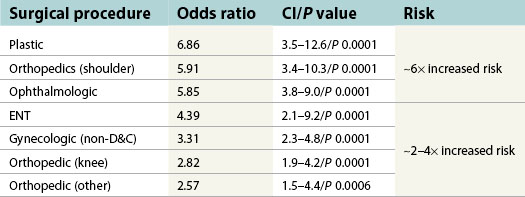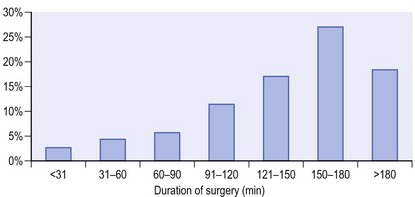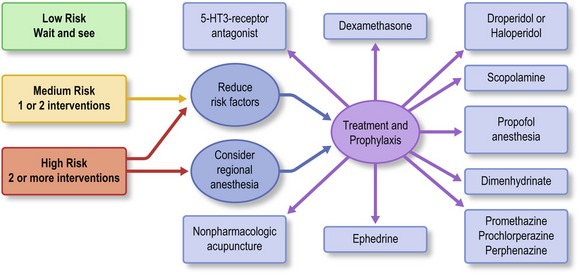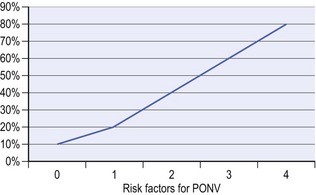CHAPTER 4 Postoperative nausea and vomiting
The “big little problem”
The estimated incidence of postoperative nausea and vomiting (PONV) in the general surgical population ranges from 20% to 30% and up to 70% to 80% in high-risk patients. This adds significantly to the healthcare burden in terms of cost (extended hospital stay) and patient morbidity (prolonged disability). In fact, many patients rank PONV as the most distressing aspect of their hospital stay, reporting that PONV is a greater concern than postoperative pain. A recent survey found that patients are even willing to incur increased personal medical costs in an effort to reduce or prevent PONV.
PONV is an important, but often disregarded, complication of the patient’s surgical experience. Plastic surgery procedures have the highest incidence of PONV (Table 4.1). In fact, breast augmentation has a reported 8–10× higher incidence of PONV than other plastic surgery cases, with 42% immediate PONV and 43% incidence 24 hours after surgery. The ramifications range from physical (increased blood pressure potentiating postoperative bleeding, ecchymosis and edema) to psychological (unpleasant and uncomfortable experience for the patient). PONV is an often preventable cause of unanticipated hospital admissions, which leads to increased labor and material costs and disruption of patient flow through an already overburdened healthcare system. As the rate of elective outpatient procedures continues to grow, any effective effort to reduce or prevent unanticipated costs is certainly valuable.
Risk factors for PONV
Prophylactic treatment
Known risk factors are the primary indication for PONV prophylaxis. As the number of risk factors increases, the risk of PONV increases. In fact, a patient with no risk factors has a PONV risk of 10%, while one risk factor gives a 20% risk. For each additional risk factor, the risk of PONV increases by 20% (Fig. 4.3).
Stay updated, free articles. Join our Telegram channel

Full access? Get Clinical Tree












